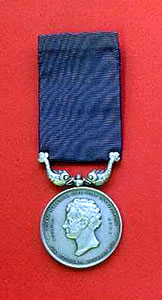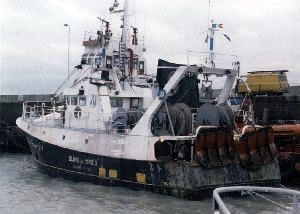





 Throughout Thursday December 26, 1985, Boxing Day, the weather on the east Kent coast had been rapidly deteriorating; by late afternoon winds from the north east were reaching strong gale force 9 to storm force 10. Coxswain Ronald Cannon and a lifeboat crew member went down to the harbour at 1830 to check both the lifeboat's mooring and those of other boats including their own.
Throughout Thursday December 26, 1985, Boxing Day, the weather on the east Kent coast had been rapidly deteriorating; by late afternoon winds from the north east were reaching strong gale force 9 to storm force 10. Coxswain Ronald Cannon and a lifeboat crew member went down to the harbour at 1830 to check both the lifeboat's mooring and those of other boats including their own. So, at 2030, Coxswain Cannon steered close to the south of the trawler and then, turning to starboard, brought the lifeboat up to her port quarter. The trawler was lying head west and pounding forward, the stern appearing to be fast aground. As the two vessels closed Crew Member Michael Petts leapt from the lifeboat and, with the help of the trawler's crew, was pulled aboard.
So, at 2030, Coxswain Cannon steered close to the south of the trawler and then, turning to starboard, brought the lifeboat up to her port quarter. The trawler was lying head west and pounding forward, the stern appearing to be fast aground. As the two vessels closed Crew Member Michael Petts leapt from the lifeboat and, with the help of the trawler's crew, was pulled aboard.